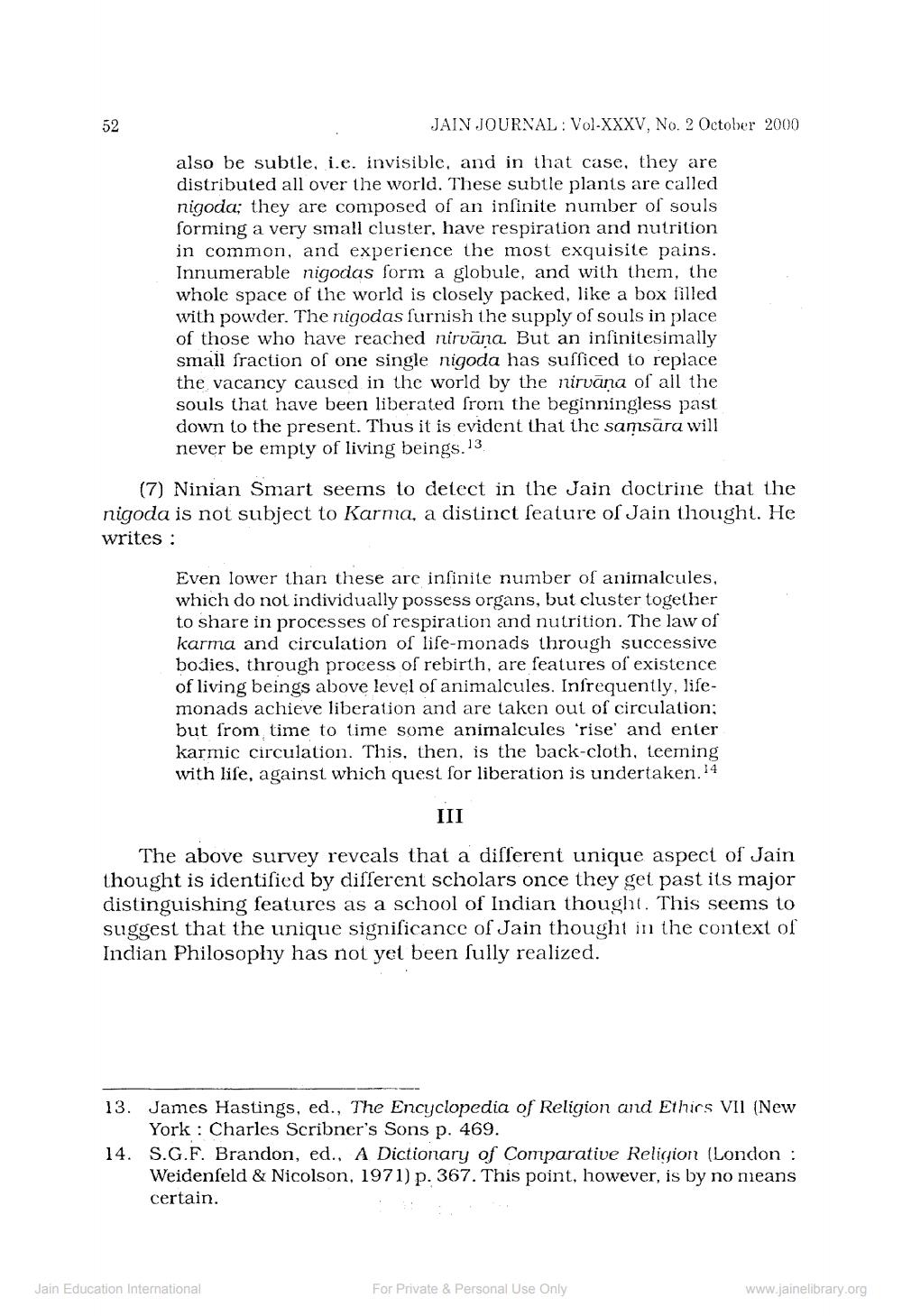Book Title: Jain Journal 2000 10 Author(s): Jain Bhawan Publication Publisher: Jain Bhawan Publication View full book textPage 9
________________ JAIN JOURNAL : Vol-XXXV, No. 2 October 2000 also be subtle, i.e. invisible, and in that case, they are distributed all over the world. These subtle plants are called nigoda; they are composed of an infinite number of souls forming a very small cluster, have respiration and nutrition in common, and experience the most exquisite pains. Innumerable nigodas form a globule, and with them, the whole space of the world is closely packed, like a box filled with powder. The nigodas furnish the supply of souls in place of those who have reached nirvana. But an infinitesimally small fraction of one single nigoda has sufficed to replace the vacancy caused in the world by the nirvana of all the souls that have been liberated from the beginningless past down to the present. Thus it is evident that the samsara will never be empty of living beings.13 (7) Ninian Smart seems to detect in the Jain doctrine that the nigoda is not subject to Karma, a distinct feature of Jain thought. He writes: Even lower than these are infinite number of animalcules, which do not individually possess organs, but cluster together to share in processes of respiration and nutrition. The law of karma and circulation of life-monads through successive bodies, through process of rebirth, are features of existence of living beings above level of animalcules. Infrequently, lifemonads achieve liberation and are taken out of circulation; but from time to time some animalcules 'rise' and enter karmic circulation. This, then, is the back-cloth, teeming with life, against which quest for liberation is undertaken.14 III The above survey reveals that a different unique aspect of Jain thought is identified by different scholars once they get past its major distinguishing features as a school of Indian thought. This seems to suggest that the unique significance of Jain thought in the context of Indian Philosophy has not yet been sully realized. 13. James Hastings, ed., The Encyclopedia of Religion and Ethics VII (New York : Charles Scribner's Sons p. 469. 14. S.G.F. Brandon, ed.. A Dictionary of Comparative Religion (London : Weidenfeld & Nicolson, 1971) p. 367. This point, however, is by no means certain. Jain Education International For Private & Personal Use Only www.jainelibrary.orgPage Navigation
1 ... 7 8 9 10 11 12 13 14 15 16 17 18 19 20 21 22 23 24 25 26 27 28 29 30 31 32 33 34 35 36 37 38 39 40 41 42 43 44 45 46 47 48 49 50 51 52 53 54 55 56 57 58 59 60 61 62 63 64 65 66 67 68 69 70
